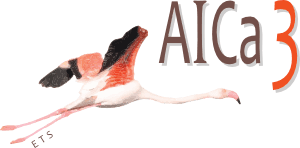The clinical course of calpainopathy (LGMD2A) and dysferlinopathy (LGMD2B)
Neurological Research 2010 VOL 32 NO 1
Author: C. Angelini, L. Nardetto, C. Borsato, R. Padoan, M. Fanin, A. C. Nascimbeni and E. Tasca
Objective: Autosomal recessive limb girdle muscular dystrophies (LGMD type 2) are a clinically and genetically heterogeneous group of disorders, characterized by progressive involvement and wasting of limb girdle muscles. In order to describe the peculiar clinical features of LGMD2A (calpainopathy) and LGMD2B (dysferlinopathy), the most frequent forms of LGMD in European countries, we analysed and compared the phenotype and the clinical course in two relatively large groups of these patients. Methods: We selected 22 patients with a molecular diagnosis of LGMD2A and 21 patients with LGMD2B and reported their clinical data collected from both clinical history and during periodical neuromuscular examinations: age and distribution of muscle involvement at onset, clinical functional score by the use of ten-point modified scale of Gardner–Medwin and Walton at onset and at last clinical examination, and the rate of disease progression.
Results: LGMD2A group included patients with different ages at onset (early-onset or late-onset), different phenotypes (upper girdle in Erb LGMD or lower girdle in Leyden–Moebius LGMD) and different disease progressions (rapid or slow course). LGMD2B patients differed for pattern of muscle involvement at onset (distal in Miyoshi dystrophy or proximal in Leyden–Moebius LGMD) but they had a rather homogeneous age at onset (in the second/third decade) and rate of disease progression.
Discussion: Our data show that besides the clinical differences within each group of patients, the two forms of LGMD present distinctive clinical features. The various phenotypes and courses can be attributed to specific pathogenetic mechanisms and might suggest differential therapeutic strategies.
 |
Scarica Articolo completo |
